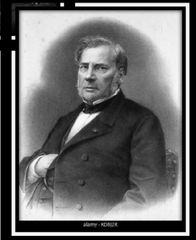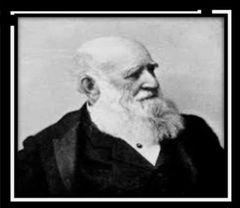![]()
![]()
![]()
Use LEFT and RIGHT arrow keys to navigate between flashcards;
Use UP and DOWN arrow keys to flip the card;
H to show hint;
A reads text to speech;
63 Cards in this Set
- Front
- Back
|
The concept of soil fertility and its management to improve crop yields is perhaps as old as the development of agriculture by man. |
Fact |
|
|
In ancient time, people had knowledge of applying manures such as _, to soil for the purpose of increasing crop yields. |
farmyard manure green manure, night soil, bone, wood ashes, etc. |
|
|
a Greek historian, first recorded the merits of green manure crops. He wrote : “But then whatever weeds are upon the ground, being turned into the earth, enrich the soil as much as dung”meaning incorporating weeds into soils is as good as applying dung. |
Xenophan (430-355 B.C) |
|

|
Xenophan (430-355 B.C) |
|
|
wrote a practical handbook, “De Agri Cultura”, and recommended intensive cultivation, crop rotations, and the use of legumes for livestock farming. He was first to classify “Land”based on specific crops. |
Cato (234-149 B.C) |
|

|
Cato (234-149 B.C)
|
|
|
emphasized the usefulness of turnips for soil improvements. He also advocated land drainage and the use of ashes, marl (lime deposits), clover and alfalfa to make the soil more productive. |
Columella (45 A.D) |
|

|
Columella (45 A.D) |
|
|
claimed that Nitre (Nitrate Salts), water, air, earth,Epsom salt (MgSO4), Saltpetre (Sodium & Potassium Nitrate), Vitriolated tarter (Potassium sulfate) and Olive oil increased plant growth. |
Jethro Tull (1731) Francis Home (1757) |
|

|
Jethro Tull (1731) |
|

|
Francis Home (1757) |
|
|
In the early 19th century two prominent scientists, a Swiss Physicist and a French Chemist & Agriculturist, were first to report that plants need 2 mineral nutrients for growth and development. J.B.Boussingaultwas the first to start field plot experiments on his farm. |
Nicholas Theodore de Seussure (1804)
Jean Baptiste Boussingault (1834) |
|

|
Nicholas Theodore de Seussure (1804) Swiss Physicist/Chemist |
|

|
Jean Baptiste Boussingault (1834) French Chemist |
|
|
He is regarded as the “Father of Agricultural Chemistry”
German chemist, reported that growing plants obtain elements Ca, K, S and P from the soil, whereas carbon from CO2 in the air and not from the soil. He also suggested that plants obtain H & O from air as well as from water and N from ammonia. He established the theory of “Law of Minimum” in relation to plant nutrition. |
Justus von Liebig (1840) |
|

|
Justus von Liebig (1840) |
|
|
_ of the Rothamsted Experiment station, England was first to make and use Super phosphate on his farm (1840). |
John B. Lawes (1837) |
|

|
John B. Lawes (1837) |
|
|
Both _&_ applied the principles of Liebig and stated that addition of mineral fertilizers to cropped soils would keep the soil fertile. They further elaborated the chemistry of plant nutrition. |
J.B.Lawes (1837) Joseph Henry Gilbert (1852) |
|

|
Joseph Henry Gilbert (1852) |
|
|
German Botanist, and others, established the essentiality of 10 nutrient elements and were using these elements in the synthetic mineral nutrient solutions for the growth of plant. Discovery of other five nutrients was made after more than 60-70 years, while the last one in the group, “Chlorine”was established to be essential for plant growth only in 1954 |
Julius von Sachs (1860) |
|

|
Julius von Sachs (1860) |
|
|
“Chlorine” was established to be essential for plant growth only in what year? |
1954 |
|
|
Quality that enables a soil to produce the proper compounds in the proper amounts and in the proper proportions, for the proper growth of specified kind of plants when all factors are favorable for growth |
Soil Fertility |
|
|
Capability of the soil to produce specified plant under a specified system of management. For a soil to be productive, it must be fertile. |
Soil Productivity |
|
|
is the ability of the soil to provide all essential plant nutrients in available forms and in a suitable balance |
Soil fertility |
|
|
Basic Concepts in Plant Nutrition |
Nutrient Nutrition Growth Plant nutrient |
|
|
are substances required by an organism for their normal growth and reproduction |
Nutrient |
|
|
The supply and absorption of chemical compounds needed for growth and metabolism of an organism. |
Nutrition |
|
|
is the progressive development of organisms. |
Growth |
|
|
is a “food” which is composed of certain chemical elements often referred to as ‘_’ or plant food elements, considered very essential for growth and development of plants. |
Plant nutrient |
|
|
Criteria of Essentiality By Arnon and Stout (1939) |
• A deficiency of the element makes it impossible for the plant to complete the vegetative or reproductive stage of its life. • The deficiency symptom of the element in question can be prevented or corrected only by supplying element. • The element is directly involved in the nutrition of plant |
|
|
Nutrient Elements Derived from the Atmosphere and Water |
Carbon Hydrogen Oxygen |
|
|
Nutrient element from the Soil Macro-nutrients (Primary) |
N - Nitrogen P - Phosphorus K - Potassium |
|
|
Nutrient element from the Soil Macro-nutrients(Secondary) |
Ca - Calcium Mg - Magnesium S - Sulfur |
|
|
Nutrient element from the Soil Micro-nutrients |
Fe- Iron Mn - Manganese Cu - Copper Mo - Molybdenum B - Boron Zn - Zinc Cl - Chlorine |
|
|
is the form in which element is combined as a part of a compound and is not accessible to plant absorption until the compound is “decomposed”. |
Unavailable form |
|
|
is the form in which the element exists as a cation or anion absorbed (surface attraction) on the surface of organic compounds or clay minerals. The exchangeable ions are partly available to plants. |
Exchangeable form (Partially available) |
|
|
is assumed to be the most available form. The water of soils tends to dissolve all the ions with which it comes in contact. The solution form is the ionic form with greater mobility. The ionic forms of the 13 essential elements (except C, H, O) available to plant are as follows: N, P, K, Ca, Mg, S, Fe, Mn, Mo, B, Cu, Zn, Cl. |
Solution form |
|
|
Roles of essential elements in plant nutrition (Biochemical classification of nutrients) |
Group I (C,H,O, Ca)
Group II (N,P,S) Group III (K,Ca, Mg) Group IV (Fe,Mn,Zn,Cu,B,Mo,Cl) |
|
|
They are basic structural elements. They are major constituents of plants (carbohydrates, proteins and fats) and organic matter. |
Group 1 (C, H, O, Ca) |
|
|
Accessory structural elements of the more active and vital living tissues. Essential component of metabolically active compounds like amino acids, proteins, enzymes and non-proteinaceous compounds. They are involved in energy storage (ATP & ADP) and transfer (Phosphate esters). |
Group II (N,P,S) |
|
|
Regulators & carriers for the most part of plant metabolism. They are involved in synthesis and translocation of carbohydrates, maintain ionic charge balance and induce enzyme activation. |
Group III (K,Ca, Mg) |
|
|
Catalysts and activators. These elements are involved in oxidation-reduction reactions, chlorophyll synthesis and also exists in organic combinations. |
Group IV (Fe,Mn,Zn,Cu,B,Mo,Cl) |
|
|
fraction of nutrients in the soil which is accessible to plant roots. Nutrients that are available to plants |
Nutrient availability |
|
|
Processes of nutrient availability |
1. Movement of ions from the soil to the soil solution. 2. Movement of ions from the soil solution to the root surface. 3. Movement of ions from the root surface to the interior part. 4. Movement of ions within the plant |
|
|
Means the amount of a nutrient in a defined volume of water ( |
Nutrient concentration |
|
|
the movement of molecules from a region of higher concentration to a region of lower concentration down the concentration gradient |
Diffusion |
|
|
occurs when the concentration of particles is higher in one area than another. In passive transport, particles will diffuse down a concentration gradient, from areas of higher concentration to areas of lower concentration, until they are evenly spaced. Created by Sal Khan. |
Concentration Gradient |
|
|
Dominant for K & P |
Diffusion |
|
|
Dominant for Ca, Mg, & Anions |
Mass flow |
|
|
nutrients come in contact with roots as the roots push their way through the soil a) Roots grow through the soil b) Contact soil particle surfaces c) Root surfaces contact adsorbed ions |
Root interception |
|
|
• Quantity of nutrients intercepted by roots depends on: |
(1) soil concentration of nutrients; (2) volume of soil displaced by root system • Roots occupy less than 1% up to 2% of soil volume; even in surface soil where root is greatest. |
|
|
Relatively small, but still important to nutrients reaching root surfaces |
Root interception |
|
|
Root interception Most significant for: |
1. Nutrients present in high concentrations (Ca, Mg) 2. Nutrients required in small amounts (Zn, Mn, other micronutrients) |
|
|
Factors affecting root interception (anything that restricts root growth) |
1. Dry soil 2. Compaction 3. Low soil pH 4. Poor aeration 5. Root disease, insects, nematodes 6. High or low soil temperature |
|
|
nutrients must be dissolved in water and as the water moves through the roots, the nutrients are also carried and hence become positionally available. |
Mass flow |
|
|
Flow driven by:
|
a) Transpiration (major factor) b) Evaporation c) Percolation |
|
|
Quantity of nutrients supplied by mass flow is proportional to: |
(1) rate of flow (volume of water transpired) (2) solution concentration of nutrients |
|
|
Supplies most of the required amounts of mobile nutrients such as NO3- (Nitrate), Cl-, SO4 2- (Sulphate), BO3 3- (Borate) Can meet Cu, Mn, and Mo requirement (c) can supply a significant portion of required Fe and Zn |
Mass flow |
|
|
Factors affecting mass flow |
1. Soil water content- dry soil, no nutrient movement 2. Temperature- low temperature reduces transpiration and evaporation 3. Size of root system- affects water uptake and movement |
|
|
Mobile nutrients |
N - Nitrogen P - Phosphorus K - Potassium Mg - Magnesium Cl - Chloride Mo - Molybdenum |
|
|
Immobile nutrients |
Ca - Calcium S - Sulfur Fe - Iron Zn -Zinc Mg - Manganese B - Boron Cu - Copper Ni - Nickel |

